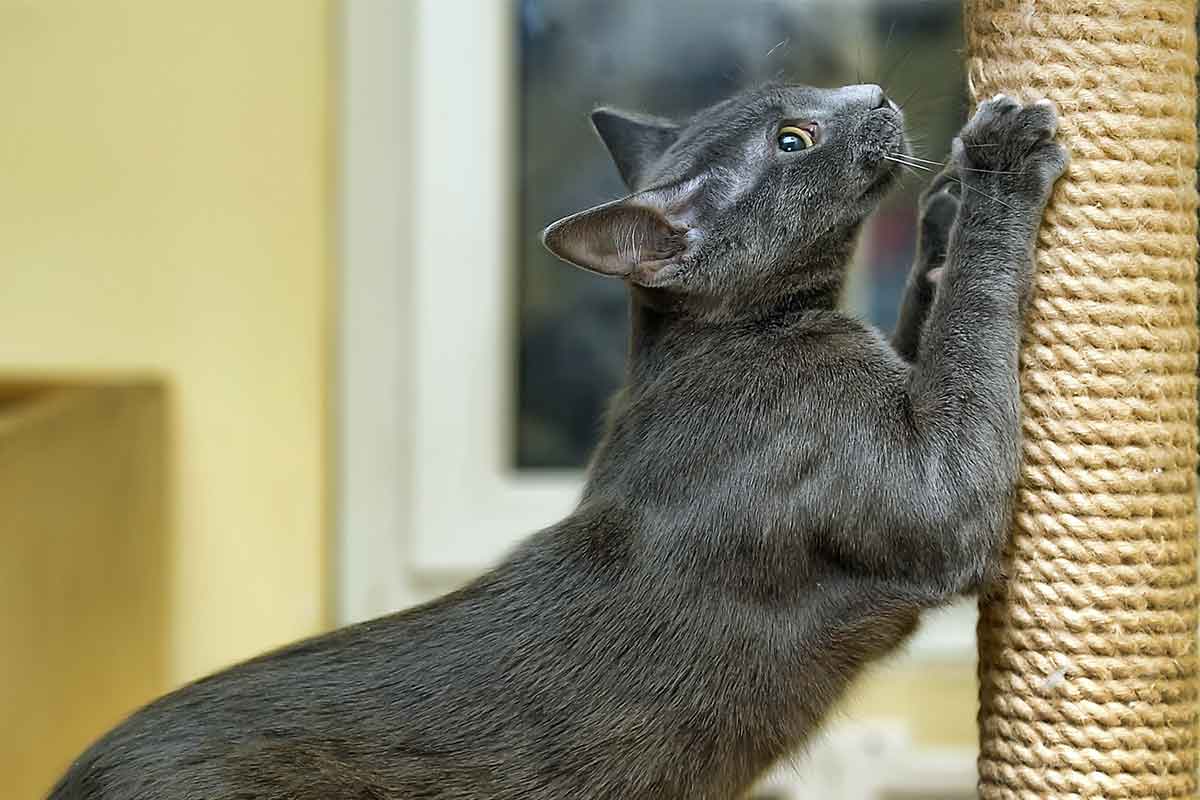When cats aren’t scratching where their people would like, it may mean the cat lands at a shelter or is dumped outdoors. It may also mean that the cat is punished by being declawed, which is nothing short of an amputation. To be clear, the last portion of each digit is removed (akin to cutting off the last portion of all your fingers at the joint).
Behavior modification has always worked and continues to be effective to encourage cats to scratch on vertical scratching posts. A new product called Feliscratch uses a visual marker and scent to attract cats to vertical posts.
Apply by drawing a line from the Feliscratch pipette on the vertical post (please never apply on the cat). The blue dye acts as a sort of flag to capture a cat’s attention.
When cats scratch on posts they’re depositing an interdigital semiochemical pheromone to mark or identify their territory. Cats are hard-wired to scratch. Even declawed cats go through the motions. Cats also scratch when excited, and presumably the stretch to reach up and scratch feels good.
Feliscratch contains a copy of this pheromone deposited by all cats from their paws when they scratch. Feliscratch also contains catnip to further attract them to the post.
But does it work? Well, yes, according to studies. Feliscratch works for eight out of ten cats already scratching (where you don’t want them to), and nine out of ten newly adopted kittens.
But would this work for my cat, Roxy? I wanted to see how it worked and determine if it was easy to use.
Roxy, who is 15, has had no real history of scratching where we don’t want her to. She has three vertical posts and three horizontal posts available for her paws 24/7. I chose (for no special reason) to use Feliscratch on the post in our dining room.
This isn’t a one and done application – the packaging explains that Feliscratch needs to be applied on a specific schedule, and over several weeks.
I was told that at her age, Roxy may not respond with the intensity of most other cats. These experts never got word to Roxy. Clearly, she was smitten by something on the very first application; though she wasn’t scratching, the response is obvious and cheek rubbing is a positive association.








